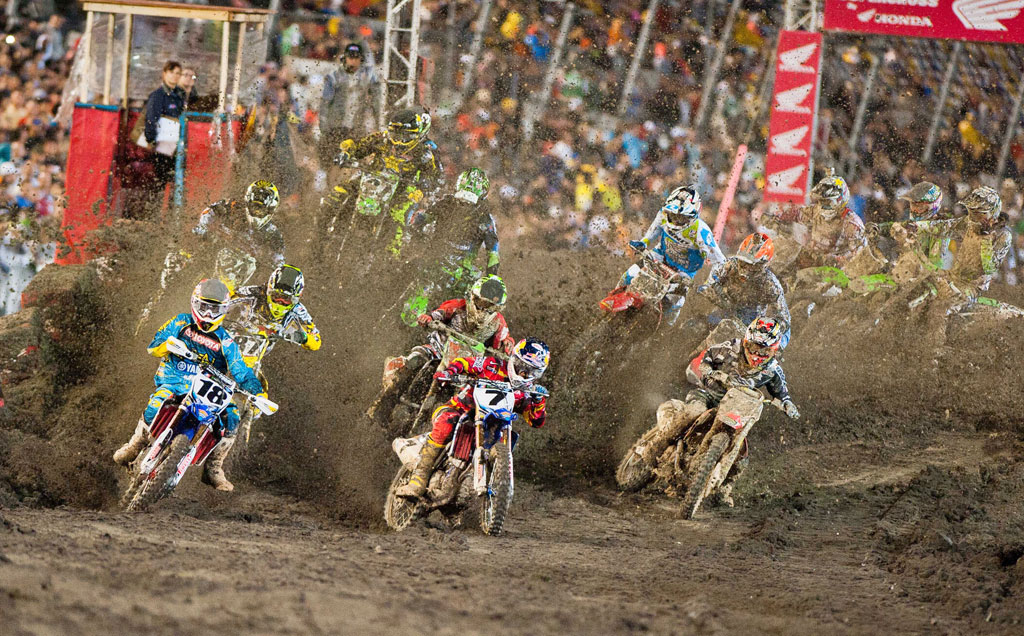The Origin Of Motocross Racing
Although the first known motocross race was held in the early 1900’s very few people realise it is one of the most physically demanding sports you can participate in. Heart rate monitors have been placed on professional MX racers and during a standard 30 minute moto an average heart rate will hover between 177 and 185 beats per minute which is significantly higher than Football, Soccer and road cycle racing. Add this intense cardiovascular workload to an athlete riding a lightweight and powerful race machine on a rough and ever changing track with a range of obstacles including big jumps, rocks, mud, ruts and bumps and you are left with a dangerous, high speed race which requires years of practice to master technique while a the same time maintaining maximum physical exertion for half an hour at a time. While the danger and physical demands increase each year with more competition, the sport is increasingly popular so to get a better idea on how it got to this point lets take a look back to it’s humble beginnings.
A Hybrid of Sorts
In 19th century United Kingdom, motocross evolved from motorcycle trials competitions that involved negotiating courses filled with technical obstacles like creek crossings, scaling vertical walls, hopping over logs and rocks at low speeds all while your riding was being judged with strict scoring. As the sport grew in popularity, the competitions became known as a motocross racing – a hybrid of the French “motocyclette” with the English “cross country.”
From Rigid Frames to Swinging Fork Rear Suspension
The first known motocross race took place at Camberley, Surrey in 1924. Bikes at the time were made of rigid frames. The rough and unpredictable racing surface and the competitive nature of the sport gave way to the creation of rear suspension by 1930, evolving to the swinging rear fork version in 1950.
A Worldwide Engagement
Motocross was introduced in the United States in 1966 when Sweden champion Torsten Hallman (who would eventually create a brand of motocross gear called Torsten Hallman Original Racewear AKA Thor MX gear) rode an exhibition event against top American TT riders in California. He, together with other motocross stars, eventually dominated the event with their lightweight two-strokes. Suddenly, Japanese motorcycle companies began challenging European factories for honour and power in the motocross world. Finally, Suzuki claimed the first world championship for a Japanese factory when a man named Joël Robert won the 1970 250 cc crown.
When Two Become One
In the late 1970s and early 80s, Japanese motorcycle manufacturers reigned during the motocross industry’s boom period. The two-stroke air-cooled, suspension machines of the time eventually gave way to water-cooled machines that featured rear suspension with single-shock absorbers.
In the Service of the Australian Rider
Of course, advancements in motocross technology also meant more riders needed to be protected and accessorised with the right gear, clothing, and accessories. Luckily, Australia boasts of a one-stop shop for all motocross needs.
MXstore houses every major motocross brand, category, clothing, hard parts and accessories all in one place, offering free shipping options and hassle free returns. Indeed, it is Australia's home of motocross.
Dial 1300 871 290 or log on to http://www.mxstore.com.au/ to see your favourite motocross items today.
